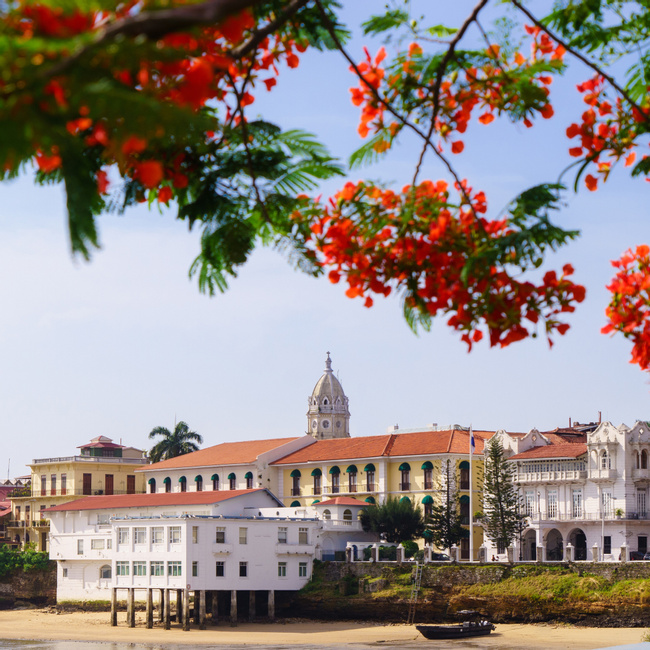- Travel Guides
Holidays and Festivals in Panama
Panamanians are a people and culture who take their holidays and festivals seriously. Streets shut down, businesses close, and people come out in colors and costumes. If you plan to visit during a larger festival or holiday, expect crowds and try to reserve hotels well in advance. Have your camera ready too, as there will undoubtedly be some good photo opportunities.

The religion of Panama is predominantly Roman Catholic, so it is not uncommon for many of the country's holidays and festivals to have ties to the church. Panama’s most sizable festival is Carnaval. During the four days preceding Ash Wednesday (which falls in February or March), towns throughout Panama revel in dancing, music, food, and drink. It’s one of the largest—and rowdiest —festivals in Latin America.
Carnaval
Panama’s most massive Carnaval celebration is in the small town of Las Tablas (pop. 8,000) on the Azuero Peninsula. The celebration here involves parades, floats, music, dancing, and serious partying. The Las Tablas festival begins with the coronation of the town’s two Carnaval Queens, one from Calle Arriba (high street) and one from Calle Abajo (low street). The town splits along these lines and forms courts, or tunas, for their respective queen. Throughout the course of the festival, each court tries to outdo the other in song, dance, and costume. As the queens are paraded around the city on floats, their respective tunas follow and compose songs, called tonadas, which praise their queen and mock their rival. The songs are fun and in good humor. The party climaxes on Tuesday night, just before Ash Wednesday.
Corpus Christi
Corpus Christi is a catholic holiday that commemorates the Eucharist. Its roots date back 1251, when Pope Urban IV sanctioned it. These days, Panama’s biggest celebration is in the town of La Villa de Los Santos on the Azuero Peninsula. In La Villa, Corpus Christi lasts nearly two weeks and involves elaborate dances that symbolize the battle between good and evil. Colorful costumes decorate both the devils and the angels, who take turns dancing and acting out their respective roles. Eventually, good prevails over evil and the devils are beaten. The festival takes place in both the streets of La Villa and its churches. Its dates vary from year to year, but generally it’s held between late May and early July.
Semana Santa
Another widespread celebration is Semana Santa (Holy Week), which takes place the week before Easter. During this time, towns throughout Panama host religious events, including a reenactment of the crucifixion and resurrection of Christ. Many Panamanians get time off from work and head for the beach. If visiting during Semana Santa (March/April), be prepared for crowds along the coast.
List of Holidays
You can check with ATP, Panama’s tourism bureau, for the exact dates of holidays and a current list of other festivals and fairs. When major holidays fall on a Thursday or Friday, they are often celebrated the following Monday. Major national holidays include:
January 1: New Year’s Day
January 9: Martyrs’ Day
The four days preceding Ash Wednesday: Carnaval
Friday before Easter Sunday: Good Friday
May 1: Worker’s Day
November 3: Independence from Colombia
November 4: Flag Day
November 10: First Call for Independence from Spain
November 28: Independence from Spain
December 8: Mother’s Day
December 25: Christmas
We believe travel is more than ticking destinations off a list – it’s about discovering new places deeply, feeling connected wherever you go, and knowing you have a trusted team behind you every step of the way.



